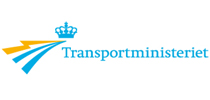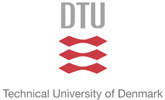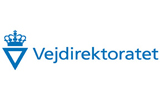Transport Models made with Traffic Analyst
Rapidis invites local consultants and engineering firms with Transport Modelling skills to utilize Traffic Analyst to create successful projects. Please contact Leif Dahl Petersen for more information and to discuss how we can cooperate.
Green Mobility Model

Please see below how GMM and Compass use Traffic Analyst.
The Green Mobility Model of Denmark
Introduction
- Nationwide with international traffic
- Passenger demand model with international and overnight part
- Route choice models using Traffic Analyst tools
- Schedule-based public route choice
- Rail, bus, ferry
- Time dependent road route choice
- Air route choice
- Rail freight route choice
- Model framework built using ArcGIS and Traffic Analyst components
- Traffic Analyst Scenario Management
Environment
- Cloud based
- Multiple user organizations
- Multiple common scenario databases
- Multiple calculation computers, created on demand, deallocated when not used. Reducing costs when not calculating.
Result presentation
- Traffic Analyst web site
- ArcGIS server
- Customer selected result maps
- Customer selected KPI´s/key figures
The COMPASS model for the City of Copenhagen
Introduction
- Copenhagen and surrounding capital area
- Activity based trip demand
- Route choice models using Traffic Analyst tools
- Frequency based public route choice
- Static road route choice in time intervals
- Dynamic road route choice
- Bike route choice
- Walk route choice
- Model framework built using ArcGIS and Traffic Analyst components
- Traffic Analyst Scenario Management
Environment
- On premise
- One user organization
- Common scenario database
- Multiple calculation computers
Result presentation
- Traffic Analyst web site
- ArcGIS server
- Customer selected result maps
- Customer selected KPI´s/key figures
More examples of Transport Models made with Traffic Analyst

TransTools 3
Rapidis is part of a consortium developing the next version of the common EU traffic model, Trans-Tools. Rapidis is responsible for all technical aspects of the Trans-Tools 3 model – design, architecture, software development and integration. The project will is planned to last 3 years.
TransTools 3 with Traffic Analyst for ArcGIS
Click here for information about how to buy the Rapidis software needed to run TransTools 3
TenConnect 2
With a number of partners, Rapidis has participated in the TenConnect2 project, focusing on the analysis of a number of trans-european infrastructure corridors. As part of the project Trans-Tools version 2.5 was produced, containing major improvements.
Effects of Proposed Railway liberalization in the EU
As part of a larger consortium Rapidis has carried out a series of traffic forecast calculations using the European Trans-Tools model. The focus of the analysis was to examine the impact of different scenarios for liberalization in the railway sector in Europe. The project was carried out for the European commissions DG TREN department.
IBU Korridoren Femern Øresund
Evaluation of High Speed rail alternatives linking Scandinavia with Northern Germany
Rapidis has conducted a study for IBU Korridoren Femern Øresund with the purpose of evaluating high speed rail links. Rapidis used the TRANS-TOOLS model version 2, which was developed in TEN Connect. The model was improved considerably in the study area. The main improvements consisted of improving model rail networks, model road networks and model ferry links, of creating a more detailed zones system, of collecting more traffic counts and of recalibrating the model with the improved traffic count information.
Consultants Otto Anker Nielsen and Christian Overgård Hansen participated in the project.
European Union, TEN Connect project
Evaluation of TEN policy proposals using the TRANS-TOOLS transportation model
The European Commission initiated a study of the future development of the European transport infrastructure. The study focused on the effects of the TEN (Trans-European transport-Networks) policy, and was carried out using the transport model TRANS-TOOLS (which covers all of Europe), developed in a prior project. The transport model is based on ArcGIS from ESRI and the ArcGIS extension Traffic Analyst from Rapidis.
The European Commission published a report in 2010 on the progress of the 30 priority transport axes of the TEN policy. The TEN Connect project provided the analytical basis for this report and contributed to the analysis of economic, environmental and social impacts of a number of alternative policy options related to the development of the TEN policy.
The TEN Connect project was carried out by a consortium of companies and universities, headed up by the Danish engineering company TetraPlan. Rapidis was responsible for all software design and implementation.
The TEN Connect consortium:
TetraPlan (Denmark)
DTU Transport (Denmark)
Rapidis (Denmark)
BMT Transport Solutions (Germany)
Institute for Regional Economy at the Christian Albrechts University in Kiel (Germany)
Institute for Transport Studies, University of Leeds (UK)
Institute for System Integrating Studies (Italy)
MCRIT (Spain)
SYSTEMA (Greece)
Ramböll (Finland)
Informi GIS (Denmark)
University of Belgrade (Serbia)
Technical University of Vilnius (Lithuania)
Sudop (Czech Republic)
University of Szczecin (Poland)
The project has concluded.
European Union, TRANS-TOOLS project
A Traffic Forecasting Model for the EU Commission
Rapidis assisted DTU Transport – Technical University of Denmark in the Trans-Tools project. The purpose of the project was to implement a transportation model covering the entire EU, and modelling passenger and freight traffic across all modes.
Rapidis handled the development of a modeling framework, based on ArcGIS’ Geoprocessing technology, handling data flows and integrating a number of calculation tools. Additionally all traffic assignment calculations (calculation of traffic flows) are handled by Traffic Analyst.

Danish National Traffic Model
Rapidis assists DTU Transport with technical aspects of the Danish National Traffic Model. The work involves software development, development of data-models and overall technical architecture of the GIS-based national traffic model.

Detailed Transport Model for Copenhagen Area
Rapidis, working as a subcontractor for Center of Traffic And Transport (now DTU Transport) – Technical University of Denmark, participated in developing a large scale and highly detailed transport model for the Greater Copenhagen Area. The transport model was developed using ArcGIS and Traffic Analyst, and is a refinement of the existing OTM model, adding highly detailed timetable based public transport assignment. Timetable and line data were imported from the web-based travel planner service www.rejseplanen.dk, and stored in ArcGIS. The transport model was used as the basis of a study of the socio-economic and environmental impacts of introducing Road Pricing in the Greater Copenhagen area.

Baltic Transport Outlook 2030
Rapidis has carried out a transportation infrastructure analysis using the Trans-Tools model, as part of the EU-funded Baltic Transport Outlook 2030 project.

ACTUM
Rapidis participates in the ACTUM research project, which focuses on the development of activity based demand models and disaggregated dynamic route choice models. The projects is headed by DTU Transport and Rapidis develops all software.

GIS-Datawarehouse for traffic data
Working for the Model Center group of the Danish Transport Research Institute, Rapidis has designed and implemented a GIS-based datawarehouse. Initially the data warehouse will be used to gather traffic counts dynamically from a number of public operators and transport authorities in the Greater Copenhagen Area. In time, other types of data relevant for transportation planners will be added and the geographic scope expanded. These data will be made available to transportation planners and other interested parties. The solution has been implemented using the ESRI ArcSDE multi-user GIS-database, as well as ArcGIS.

Greenland Transport Model
This project delivered a strategic assessment tool to the Greenland Home Rule Authority for evaluating transportation infrastructure investments. The project was carried out by DTU Transport – Technical University of Denmark as the main contractor, with Rapidis participating as sub-contractor. The transport model was built using ArcGIS and Traffic Analyst.

Analyzing congestion effects
Tools for analyzing congestion effects on the basis of GPS-data.
Working for the Danish Road Directorate, Rapidis has designed and implemented a set of tools, which makes it possible for the Road Directorate to analyze GPS-data gathered from fleets of vehicles. The result is a detailed description of various congestion effects in the road network, such as the daily variation of travel speeds, congestion bottlenecks, etc. The tools were implemented using ArcGIS and Oracle DBMS.
